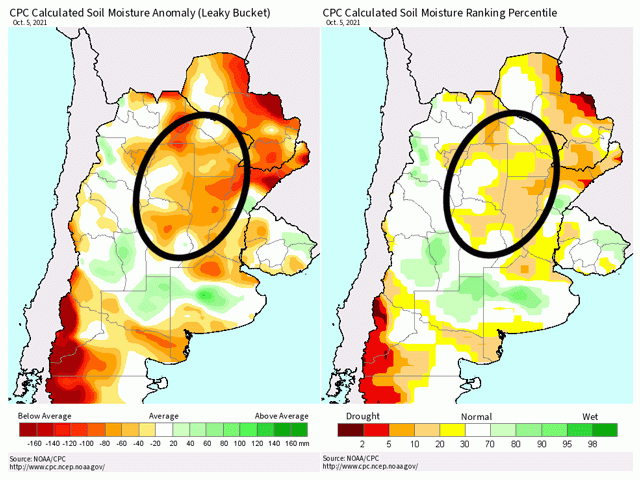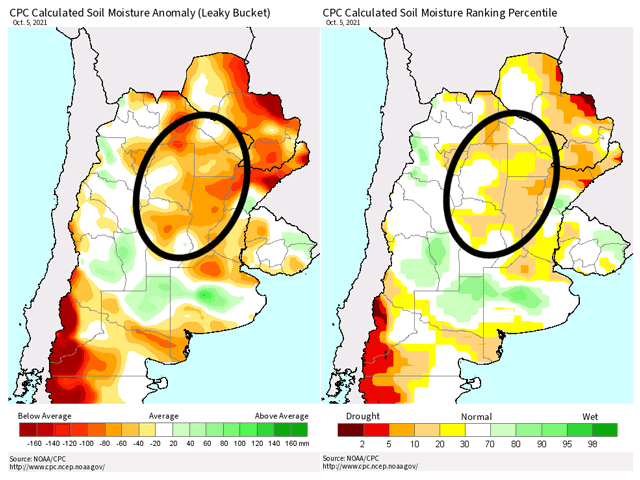South America Calling
Argentina is Going to Need Rain
Conditions in Brazil have been rather favorable for planting corn and soybeans during the last couple of weeks and continue to be. Wheat has done well as well, though some dryness would be good in some areas for maturation and harvest.
Several systems have formed and reinforced a front across southern states, providing scattered showers in most areas. Meanwhile, isolated to sometimes scattered showers continue over central areas. It has not been perfect by any means, but on the whole, Brazil is looking rather good considering the borderline La Nina conditions we have been facing.
Planting for both corn and soybeans is ahead of average across the country this season, as producers try to avoid the perils of last season's weather conditions.
P[L1] D[0x0] M[300x250] OOP[F] ADUNIT[] T[]
The same cannot be said of Argentina. Scattered showers have moved through the country somewhat frequently so far this spring, but the coverage and amounts just have not been impressive. Large areas of central and western Argentina have had more misses than hits, evident in the attached soil moisture map. Meanwhile, most of the primary wheat areas across the south continue to have adequate soil moisture for growth as this portion of the crop is getting closer to reproductive stages.
But corn and soybean planting has been slow due to the relative dryness. This is expected from a La Nina. The event typically underproduces rainfall across Argentina in the spring, though conditions usually catch up to normal by mid-summer. So far rainfall has not been as poor as a typical La Nina, perhaps because we are teetering on the edge of it instead of being firmly entrenched, but that does not mean that conditions are favorable. The erratic nature to the showers is likely to have some adverse effects.
With a long growing season, Argentinian farmers like to hedge against poor weather conditions by planting some of their corn crop early in September and October, and some late in November and December. So far, the early crop has not had ideal conditions and there may be a push to hedge toward the later-planted crop. But this also has its drawbacks.
Waiting until later could put the crop at risk for an early end to the wettest part of the year, typically in summer. If pollination gets closer to the fall and the rains are not impressive there either, there could be a host of issues as well with seemingly good-looking crops finding flash drought conditions. That is a phenomenon farmers in the U.S. know well, and happened in portions of the Corn Belt this year.
So, Argentina is going to need rain. For the early-planted crop, it is needed soon. That does not look to be in the cards for a lot of areas. A few isolated showers will dot the country this weekend, but most areas are going to stay dry.
There is hope in the middle of next week, around Oct. 13-14 for a system to come through. But that looks like it will bring a quick-hitting line of scattered showers. Ultimately, some of these areas are going to be missed as well.
Prospects after that frontal passage are not great for additional showers, though not zero, and producers will be looking toward the Pacific as La Nina is forecast to strengthen during the course of this month. In the likelihood that it does so, the prospect for getting good moisture in the fields for corn and soybeans will dwindle this spring, and the trend toward later planting will continue. Argentina will need moisture then, too. We will have to see if La Nina will be generous or not.
John Baranick can be reached at john.baranick@dtn.com
(c) Copyright 2021 DTN, LLC. All rights reserved.







Comments
To comment, please Log In or Join our Community .